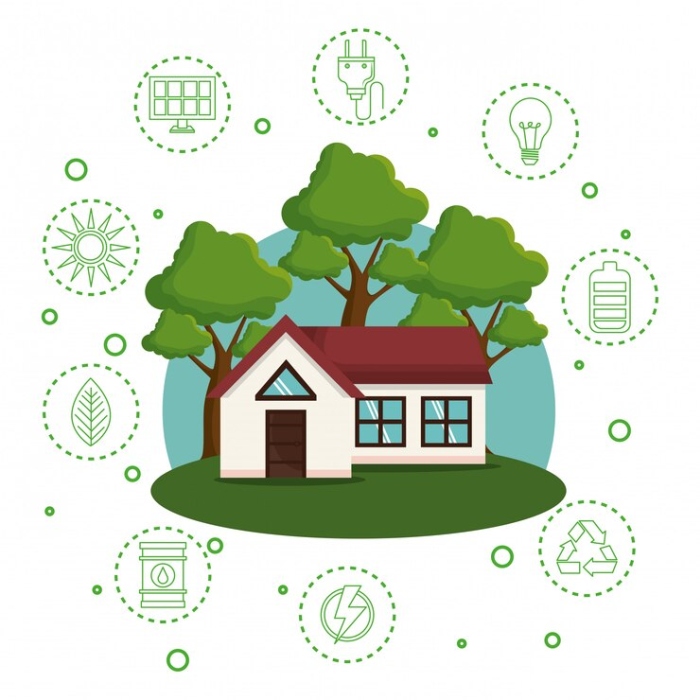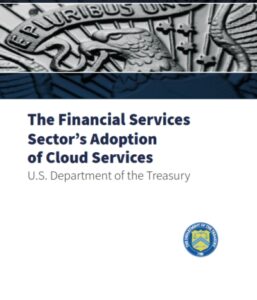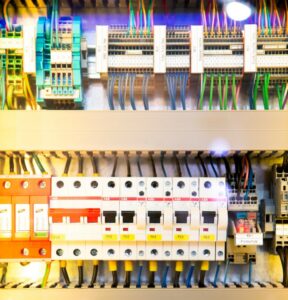Nov 29, 2023
Nowadays environmental concerns have reached critical levels, that’s why sustainable construction practices have emerged as a beacon of hope. These practices not only help protect our planet but also offer numerous advantages to homeowners and builders alike. In this article, we will dig into the methods and merits of sustainable construction.
Methods of Sustainable Construction
Here are some key principles and methods integral to sustainable construction:
1. Energy Efficiency
One of the foundational pillars of sustainable construction is ensuring that homes are constructed with energy efficiency and environmental sustainability at their core. This is where the auditing platform for home renovation grants comes into play. Such platforms provide valuable resources and support to homeowners and builders who are committed to accessing grants and incentives for sustainable construction projects.
Sustainable construction places a strong emphasis on optimizing energy usage. Lighting serves as a crucial component of any building, and the choice of lighting fixtures holds the potential to dramatically impact energy efficiency. LED lights have emerged as the go-to choice for sustainable construction due to their myriad of benefits. LED lights are remarkably energy-efficient, consuming significantly less electricity compared to traditional incandescent or fluorescent bulbs. This substantial reduction in energy consumption translates into lower utility bills and a considerably smaller carbon footprint.
What’s more, LED lights boast an extended lifespan, requiring fewer replacements, which leads to reduced maintenance costs and less waste. Moreover, LED lighting can seamlessly integrate with smart lighting systems, affording precise control and automation to further optimize energy usage within a building.
2. Green Insulation and Green Buildings
Sustainable construction often employs eco-friendly insulation materials that have a lower environmental impact. Additionally, green building designs prioritize features like passive solar heating, natural ventilation, and efficient space planning to reduce energy demands and create more comfortable living and working environments.
3. Recycled Materials
Reusing and recycling construction materials, such as reclaimed wood, recycled steel, and repurposed bricks, helps reduce the demand for new resources and minimizes waste sent to landfills. Sustainable construction embraces the concept of “reduce, reuse, and recycle” in every phase of a project.
Steel buildings have emerged as a cornerstone of sustainable construction for several compelling reasons. Firstly, steel is renowned for its exceptional durability and longevity, reducing the need for frequent maintenance and replacements. This durability inherently contributes to the overall sustainability of a building.
Additionally, steel buildings can be meticulously designed to be energy-efficient, incorporating features like insulation, cool roofing, and energy-efficient windows to minimize energy consumption.
4. Cool Roofs
Cool roofs, designed to reflect more sunlight and absorb less heat than traditional roofs, help reduce indoor temperatures and the urban heat island effect. This can lead to lower cooling costs and increased comfort for occupants.
5. Water Management
Sustainable construction employs innovative water management techniques like rainwater harvesting, graywater recycling, and efficient plumbing systems to reduce water consumption. These methods conserve this precious resource and decrease the energy required for water treatment and distribution.
6. Energy Conservation
Beyond energy-efficient technologies, sustainable construction advocates for energy conservation through mindful design. This includes features like well-placed windows for natural daylighting, smart building controls, and passive design strategies that reduce the need for artificial lighting and heating.
7. Low-Impact Landscaping
Sustainable construction extends to the surrounding landscape, where native plants, permeable pavements, and water-efficient irrigation systems are used to create outdoor spaces that complement the eco-conscious ethos of the building itself.
Benefits of Sustainable Construction
Here are the common benefits of sustainable construction:
1. Economic Prosperity
Sustainable buildings are more energy-efficient, resulting in lower utility bills for occupants. Reduced maintenance expenses, thanks to the use of durable and eco-friendly materials, further contribute to financial efficiency.
The commitment to sustainability also positions companies and organizations as responsible corporate citizens, improving their reputation and attracting environmentally conscious customers and investors. In this way, sustainable construction not only bolsters the bottom line but also promotes economic resilience and competitiveness in an increasingly environmentally aware market.
2. Improved Quality of Life
Sustainable construction places a premium on the well-being of building occupants. This leads to healthier living environments, minimizing the risk of respiratory issues and allergies. Additionally, access to natural light, along with thermal comfort, has been linked to increased productivity and overall well-being, improving the quality of life for occupants.
Sustainable construction thus goes beyond the structure itself, it fosters spaces where individuals thrive, leading to happier and more productive communities.
3. Financial Efficiency
Energy-efficient designs and technologies reduce energy consumption, leading to significantly lower utility bills for building occupants. The incorporation of renewable energy sources, such as solar panels, can even turn buildings into energy producers, generating income through excess energy sold back to the grid.
Moreover, sustainable construction projects often qualify for tax incentives, rebates, and grants offered by governments and municipalities. These financial incentives offset initial investments and make sustainable building practices more financially attractive for builders and developers.
Additionally, the use of durable and low-maintenance materials, coupled with efficient building systems, reduces ongoing operational and maintenance expenses. This translates into further cost savings over the life of the building, solidifying the financial efficiency of sustainable construction.
4. Health and Comfort
Sustainable buildings are often designed to offer improved indoor air quality and natural lighting, which can significantly enhance the health and comfort of occupants. Enhanced ventilation and reduced exposure to harmful chemicals in building materials contribute to a healthier living environment.
5. Market Value
Sustainable buildings tend to command higher market values and are highly sought after by environmentally conscious buyers. This increased demand can translate into higher property resale values, making sustainable construction a sound financial investment.
See: Sustainability: A Must for Fintech Growth
In conclusion, sustainable construction practices offer a multitude of benefits for homeowners, builders, and our planet. Embracing sustainability in construction allows us to create greener, more energy-efficient, and cost-effective buildings while contributing to a healthier planet for generations to come. The journey toward sustainable construction is not only responsible but also highly rewarding for all stakeholders involved.

 The National Crowdfunding & Fintech Association (NCFA Canada) is a financial innovation ecosystem that provides education, market intelligence, industry stewardship, networking and funding opportunities and services to thousands of community members and works closely with industry, government, partners and affiliates to create a vibrant and innovative fintech and funding industry in Canada. Decentralized and distributed, NCFA is engaged with global stakeholders and helps incubate projects and investment in fintech, alternative finance, crowdfunding, peer-to-peer finance, payments, digital assets and tokens, artificial intelligence, blockchain, cryptocurrency, regtech, and insurtech sectors. Join Canada’s Fintech & Funding Community today FREE! Or become a contributing member and get perks. For more information, please visit: www.ncfacanada.org
The National Crowdfunding & Fintech Association (NCFA Canada) is a financial innovation ecosystem that provides education, market intelligence, industry stewardship, networking and funding opportunities and services to thousands of community members and works closely with industry, government, partners and affiliates to create a vibrant and innovative fintech and funding industry in Canada. Decentralized and distributed, NCFA is engaged with global stakeholders and helps incubate projects and investment in fintech, alternative finance, crowdfunding, peer-to-peer finance, payments, digital assets and tokens, artificial intelligence, blockchain, cryptocurrency, regtech, and insurtech sectors. Join Canada’s Fintech & Funding Community today FREE! Or become a contributing member and get perks. For more information, please visit: www.ncfacanada.org
Related Posts
- SEO Powered Content & PR Distribution. Get Amplified Today.
- PlatoData.Network Vertical Generative Ai. Empower Yourself. Access Here.
- PlatoAiStream. Web3 Intelligence. Knowledge Amplified. Access Here.
- PlatoESG. Carbon, CleanTech, Energy, Environment, Solar, Waste Management. Access Here.
- PlatoHealth. Biotech and Clinical Trials Intelligence. Access Here.
- Source: https://ncfacanada.org/the-methods-and-benefits-of-sustainable-construction/
- :has
- :is
- :not
- :where
- 150
- 2018
- 29
- a
- access
- accessing
- Additionally
- advantages
- advocates
- affiliates
- After
- AIR
- alike
- All
- Allergies
- allows
- along
- also
- alternative
- alternative finance
- an
- and
- any
- ARE
- article
- artificial
- artificial intelligence
- AS
- Assets
- At
- attracting
- attractive
- Automation
- aware
- back
- BE
- beacon
- become
- been
- benefits
- Beyond
- Bills
- blockchain
- bolsters
- Bottom
- builders
- Building
- Building Materials
- but
- buyers
- by
- cache
- CAN
- Canada
- carbon
- carbon footprint
- chemicals
- choice
- Citizens
- closely
- come
- comes
- comfort
- comfortable
- commitment
- committed
- Common
- Communities
- community
- Companies
- compared
- compelling
- competitiveness
- Complement
- component
- concept
- Concerns
- conclusion
- conscious
- CONSERVATION
- construction
- consumption
- contribute
- contributes
- contributing
- control
- controls
- Cool
- Core
- cornerstone
- Corporate
- Cost
- cost savings
- cost-effective
- Costs
- coupled
- create
- critical
- Crowdfunding
- crucial
- cryptocurrency
- Customers
- decentralized
- decrease
- Demand
- demands
- Design
- designed
- designs
- developers
- DIG
- digital
- Digital Assets
- distributed
- distribution
- dramatically
- due
- durability
- Eco-conscious
- Eco-friendly
- Economic
- ecosystem
- Education
- effect
- efficiency
- efficient
- electricity
- Embraces
- embracing
- emerged
- emphasis
- employs
- energy
- energy conservation
- Energy Consumption
- energy efficiency
- engaged
- enhance
- enhanced
- ensuring
- Environment
- environmental
- environmental concerns
- Environmental Sustainability
- environmentally
- environments
- Ether (ETH)
- Ethos
- Even
- Every
- exceptional
- excess
- expenses
- Exposure
- extends
- Features
- fewer
- finance
- financial
- financial innovation
- financially
- fintech
- Footprint
- For
- fosters
- Foundational
- frequent
- from
- funding
- funding opportunities
- further
- generating
- generations
- get
- Global
- Goes
- Government
- Governments
- grants
- Green
- greener
- Grid
- Growth
- happier
- harmful
- Harvesting
- Have
- Health
- healthier
- help
- helps
- High
- higher
- highly
- holds
- Home
- Homes
- hope
- http
- HTTPS
- Impact
- improved
- improving
- in
- Incentives
- includes
- Income
- incorporating
- increased
- increasingly
- individuals
- Indoor
- industry
- information
- inherently
- initial
- Innovation
- innovative
- Insurtech
- integral
- integrate
- Intelligence
- into
- investment
- Investments
- Investors
- involved
- island
- issues
- IT
- ITS
- itself
- Jan
- journey
- jpg
- Key
- landscape
- lead
- leading
- Leads
- Led
- less
- levels
- Life
- lifespan
- light
- Lighting
- like
- Line
- linked
- living
- longevity
- lower
- maintenance
- make
- Making
- management
- Market
- Market Values
- materials
- max-width
- member
- Members
- methods
- meticulously
- minimize
- minimizes
- minimizing
- more
- Moreover
- multitude
- Municipalities
- must
- myriad
- native
- Natural
- Need
- networking
- New
- numerous
- of
- offer
- offered
- offset
- often
- on
- ongoing
- only
- operational
- opportunities
- Optimize
- optimizing
- or
- organizations
- our
- Outdoor
- over
- overall
- panels
- partners
- passive
- payments
- peer to peer
- perks
- phase
- pillars
- Places
- planet
- planning
- plants
- platform
- Platforms
- plato
- Plato Data Intelligence
- PlatoData
- Play
- please
- Plumbing
- positions
- potential
- practices
- Precious
- precise
- Premium
- principles
- Prioritize
- Producers
- productive
- productivity
- project
- projects
- promotes
- property
- protect
- provide
- provides
- qualify
- quality
- reached
- reasons
- rebates
- recycled
- recycling
- reduce
- Reduced
- reduces
- reducing
- reduction
- reflect
- Regtech
- Renewable
- renewable energy
- Renowned
- reputation
- required
- resilience
- resource
- Resources
- responsible
- resulting
- reuse
- rewarding
- Risk
- s
- Savings
- seamlessly
- Sectors
- sent
- serves
- Services
- several
- significantly
- smaller
- smart
- solar
- solar panels
- sold
- solidifying
- some
- sought
- Sound
- Sources
- Space
- spaces
- stakeholders
- steel
- Stewardship
- strategies
- strong
- structure
- substantial
- such
- sunlight
- support
- Surrounding
- Sustainability
- sustainable
- Systems
- tax
- techniques
- Technologies
- than
- thanks
- that
- The
- their
- thermal
- These
- this
- thousands
- Thrive
- Through
- Thus
- to
- today
- Tokens
- toward
- traditional
- translate
- treatment
- TURN
- urban
- us
- Usage
- use
- used
- utility
- Valuable
- Values
- vibrant
- Visit
- Waste
- Water
- Way..
- we
- which
- while
- WHO
- why
- will
- windows
- with
- within
- wood
- working
- works
- zephyrnet












